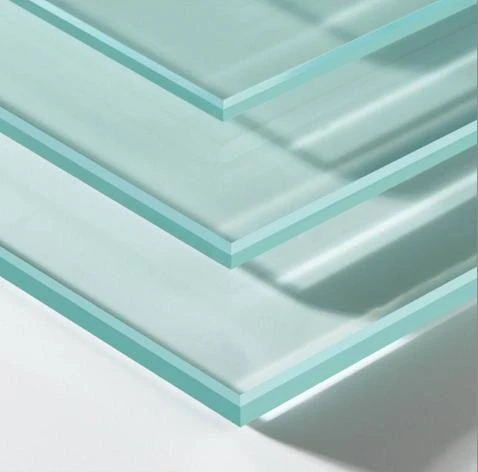Understanding Heat Treated Float Glass Properties, Applications, and Benefits
Float glass is a widely used type of glass that is manufactured through a process where molten glass is floated on top of molten tin, creating a smooth, flat surface. This basic form of glass can then undergo various treatments to enhance its properties. One such treatment is heat treatment, which significantly improves the structural integrity and performance of float glass, making it suitable for a diverse range of applications.
What is Heat Treated Float Glass?
Heat treated float glass, often referred to as tempered glass, is produced by heating the float glass to a temperature exceeding 600 degrees Celsius and then cooling it rapidly through a controlled process. This process increases the glass's strength by inducing compressive stresses on its surface while creating tensile stresses in its interior. The result is a glass product that is much more resistant to thermal stress and mechanical impact compared to standard float glass.
Properties of Heat Treated Float Glass
1. Increased Strength Heat treated float glass is approximately five to six times stronger than untreated glass of the same thickness. This strength is particularly beneficial in applications where safety and durability are paramount, such as in façade systems, glass doors, and windows.
2. Thermal Resistance One of the standout features of heat treated glass is its ability to withstand sudden temperature changes. This thermal resistance makes it ideal for usage in environments where temperature fluctuations are common, such as in buildings with large windows exposed to direct sunlight.
3. Safety In the event of breakage, heat treated glass shatters into small, blunt pieces instead of sharp shards. This characteristic minimizes the risk of injury, making it a preferred choice in residential and commercial buildings alike.
4. Optical Clarity Similar to standard float glass, heat treated float glass maintains excellent optical clarity, allowing for natural light transmission without distortion. This quality is crucial for applications such as curtain walls and glass facades, where aesthetics and visibility are important.
heat treated float glass
Applications of Heat Treated Float Glass
The versatility of heat treated float glass makes it suitable for various sectors
1. Architecture and Construction Heat treated glass is frequently used in modern building designs, where it can be found in large glass panels, windows, and doors. Its strength and thermal properties allow architects to create expansive glass structures that are both safe and visually appealing.
2. Automotive Industry In the automotive sector, heat treated glass is used for side windows and sunroofs due to its durability and resistance to thermal stresses. It contributes to enhanced vehicle safety and aesthetics.
3. Furniture and Interior Design The use of heat treated glass is also popular in furniture design, such as table tops, shelves, and partitions. The combination of safety, design flexibility, and durability provides an edge in contemporary furniture solutions.
4. Shower Enclosures and Bathroom Fittings Heat treated glass is an optimal choice for shower doors and enclosures, as it combines safety with a sleek aesthetic. It easily withstands the moisture and temperature variations associated with bathrooms.
Benefits of Using Heat Treated Float Glass
Choosing heat treated float glass comes with numerous benefits. The initial investment may be higher compared to standard glass, but the long-term advantages, including reduced maintenance costs, enhanced safety, and improved aesthetic appeal, make it a sound choice. Furthermore, the energy efficiency provided by heat treated glass can lead to lower utility bills, as it helps regulate indoor temperatures.
In summary, heat treated float glass is a valuable material that offers significant benefits in strength, safety, and thermal resistance. Its diverse applications across various industries highlight its importance in contemporary design and functionality. As technology advances, the continued evolution of heat treated glass promises even greater possibilities for innovation in architecture, automotive design, and beyond.
 Afrikaans
Afrikaans  Albanian
Albanian  Amharic
Amharic  Arabic
Arabic  Armenian
Armenian  Azerbaijani
Azerbaijani  Basque
Basque  Belarusian
Belarusian  Bengali
Bengali  Bosnian
Bosnian  Bulgarian
Bulgarian  Catalan
Catalan  Cebuano
Cebuano  Corsican
Corsican  Croatian
Croatian  Czech
Czech  Danish
Danish  Dutch
Dutch  English
English  Esperanto
Esperanto  Estonian
Estonian  Finnish
Finnish  French
French  Frisian
Frisian  Galician
Galician  Georgian
Georgian  German
German  Greek
Greek  Gujarati
Gujarati  Haitian Creole
Haitian Creole  hausa
hausa  hawaiian
hawaiian  Hebrew
Hebrew  Hindi
Hindi  Miao
Miao  Hungarian
Hungarian  Icelandic
Icelandic  igbo
igbo  Indonesian
Indonesian  irish
irish  Italian
Italian  Japanese
Japanese  Javanese
Javanese  Kannada
Kannada  kazakh
kazakh  Khmer
Khmer  Rwandese
Rwandese  Korean
Korean  Kurdish
Kurdish  Kyrgyz
Kyrgyz  Lao
Lao  Latin
Latin  Latvian
Latvian  Lithuanian
Lithuanian  Luxembourgish
Luxembourgish  Macedonian
Macedonian  Malgashi
Malgashi  Malay
Malay  Malayalam
Malayalam  Maltese
Maltese  Maori
Maori  Marathi
Marathi  Mongolian
Mongolian  Myanmar
Myanmar  Nepali
Nepali  Norwegian
Norwegian  Norwegian
Norwegian  Occitan
Occitan  Pashto
Pashto  Persian
Persian  Polish
Polish  Portuguese
Portuguese  Punjabi
Punjabi  Romanian
Romanian  Russian
Russian  Samoan
Samoan  Scottish Gaelic
Scottish Gaelic  Serbian
Serbian  Sesotho
Sesotho  Shona
Shona  Sindhi
Sindhi  Sinhala
Sinhala  Slovak
Slovak  Slovenian
Slovenian  Somali
Somali  Spanish
Spanish  Sundanese
Sundanese  Swahili
Swahili  Swedish
Swedish  Tagalog
Tagalog  Tajik
Tajik  Tamil
Tamil  Tatar
Tatar  Telugu
Telugu  Thai
Thai  Turkish
Turkish  Turkmen
Turkmen  Ukrainian
Ukrainian  Urdu
Urdu  Uighur
Uighur  Uzbek
Uzbek  Vietnamese
Vietnamese  Welsh
Welsh  Bantu
Bantu  Yiddish
Yiddish  Yoruba
Yoruba  Zulu
Zulu 

